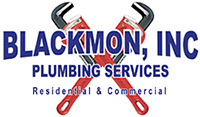Whether due to wear and tear, environmental factors, or unforeseen accidents, addressing issues with your water lines promptly can prevent significant damage and maintain the integrity of your home’s plumbing system. This guide, presented by Blackmon Plumbing, aims to empower homeowners with the knowledge and confidence to undertake water line replacement projects themselves, ensuring efficient, cost-effective repairs.

Understanding Water Line Damage
Signs of Damage: Recognizing the signs of water line damage is the first step in addressing any plumbing issues. Look out for decreased water pressure, discolored water, or unexplained increases in your water bill.
Common Causes: Various factors, including freezing temperatures, tree root intrusion, and material degradation, can contribute to water line damage. Understanding these can help you take preventive measures in the future.
Preparing for Replacement
Tools and Materials: Gathering the necessary tools and materials before beginning your project is essential. You’ll need pipe cutters, wrenches, Teflon tape, replacement pipes (PVC, copper, or PEX, depending on your system), and other plumbing supplies.
Safety Precautions: Always prioritize safety when undertaking DIY plumbing projects. This includes turning off the water supply, wearing appropriate protective gear, and ensuring a clear, safe workspace.
Step-by-Step Replacement Process
Locating the Damaged Section
Carefully identify the damaged section of your water line. This may require some detective work, as not all damage is immediately visible.
Removing the Damaged Pipe
Once located, use your tools to carefully remove the damaged section. Ensure clean, straight cuts to facilitate a smooth installation of the replacement pipe.
Installing the New Pipe
Measure and cut your replacement pipe to fit the gap left by the removed section. Apply Teflon tape to the threads of any connections, and securely fasten the new pipe in place, using the appropriate fittings.
Testing the Repair
After installation, slowly turn the water supply back on and inspect the new section for leaks. Ensure all connections are tight and secure before considering the project complete.
Maintenance Tips to Prevent Future Damage
Regular inspection and maintenance can significantly extend the life of your water lines. Consider scheduling periodic checks and addressing any minor issues before they escalate.
When to Call a Professional
While many aspects of water line replacement can be handled DIY, certain situations require the expertise of a professional plumber. If you encounter complex issues, extensive damage, or feel unsure about any part of the process, contacting a licensed plumbing service like Blackmon Plumbing is advisable.
DIY Methods for Simple Water Line Repairs
For minor issues, several DIY methods can effectively repair simple water line damage. Techniques such as using slip coupling or pipe clamps can temporarily fix leaks until a more permanent solution is applied. These methods require basic plumbing tools and a careful approach to ensure a successful repair.
Water Line Repair
Water line repair involves a systematic approach to identify, remove, and replace damaged sections of your plumbing system. By following a step-by-step process and employing simple DIY methods when appropriate, homeowners can address minor issues independently. However, recognizing the limits of DIY repairs and when to seek professional assistance from services like Blackmon Plumbing is crucial for maintaining the safety and integrity of your home’s water lines.
